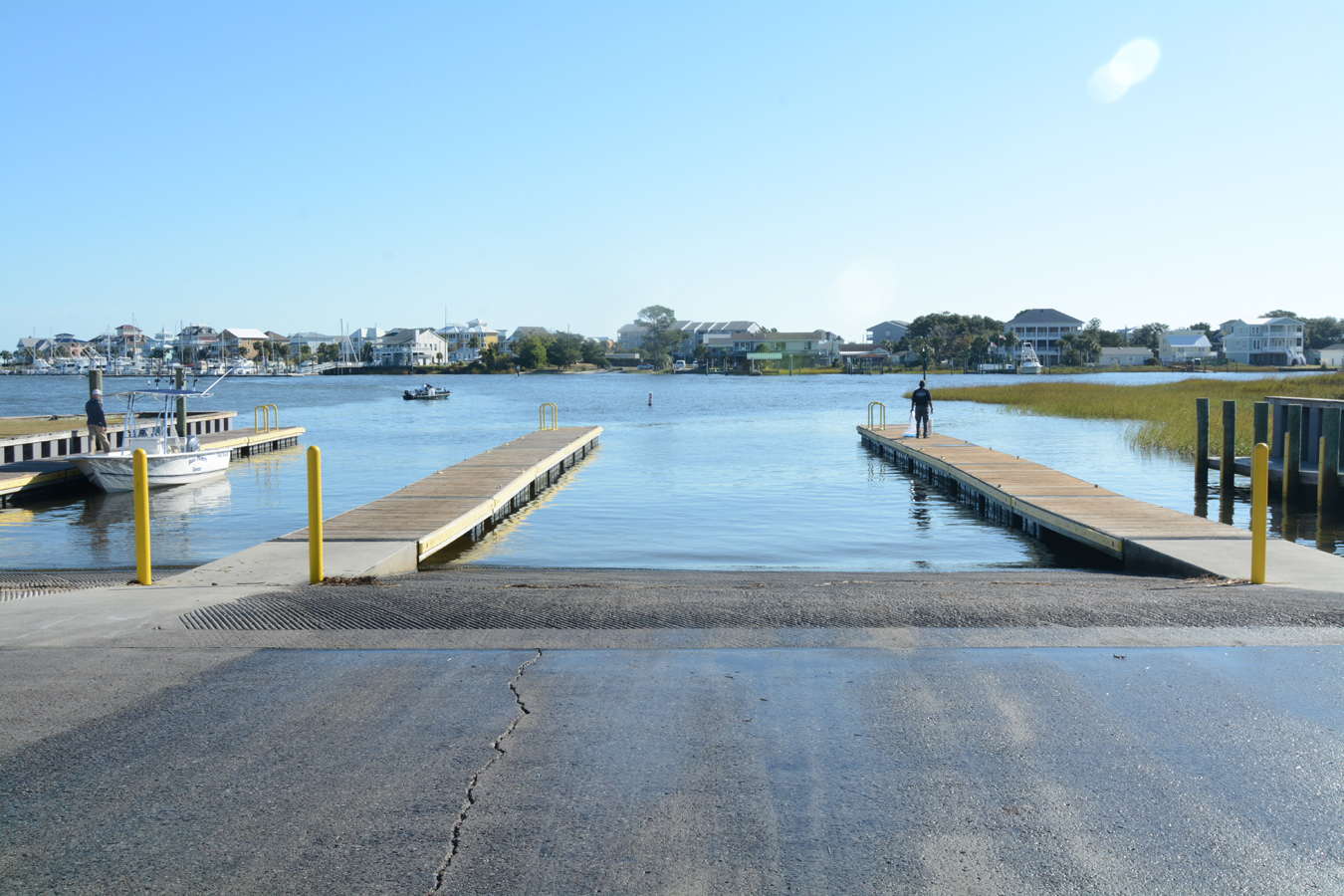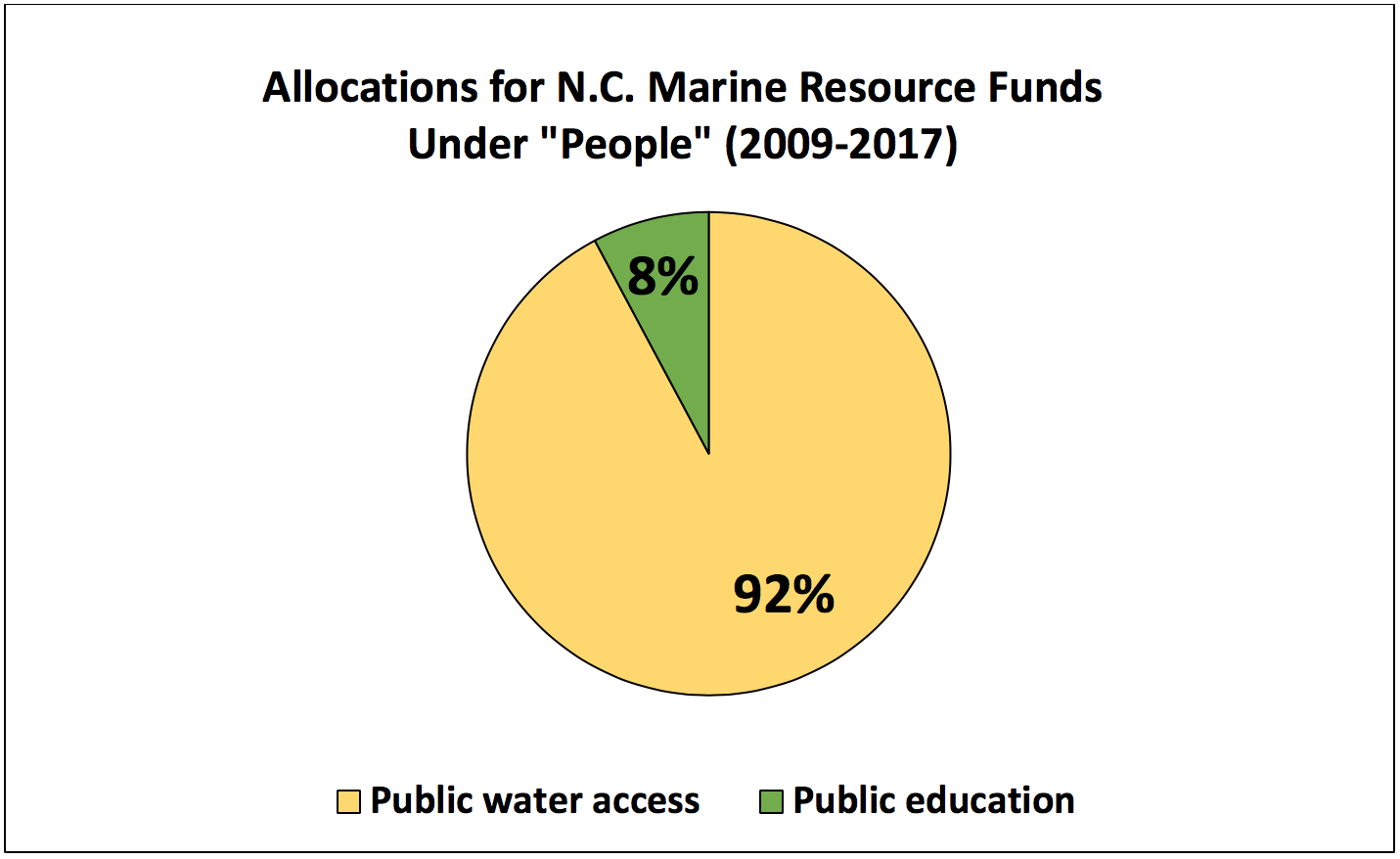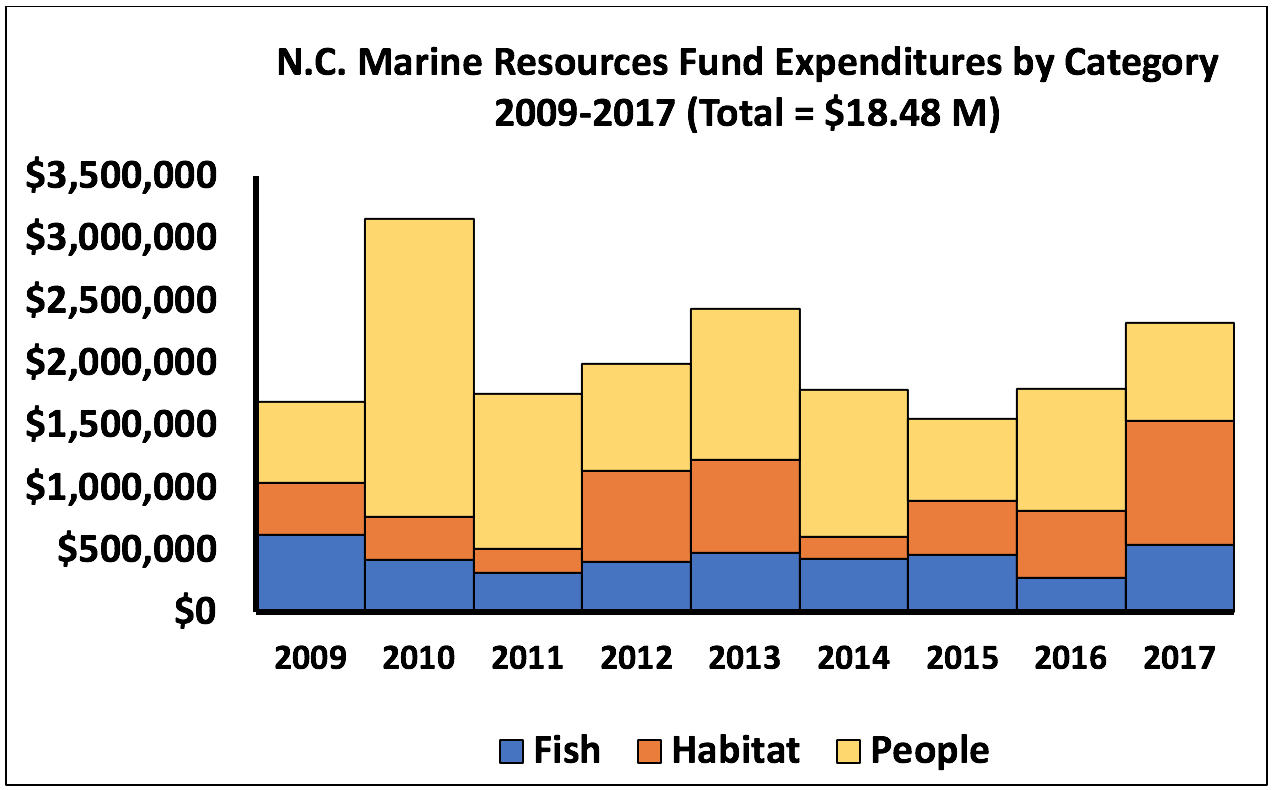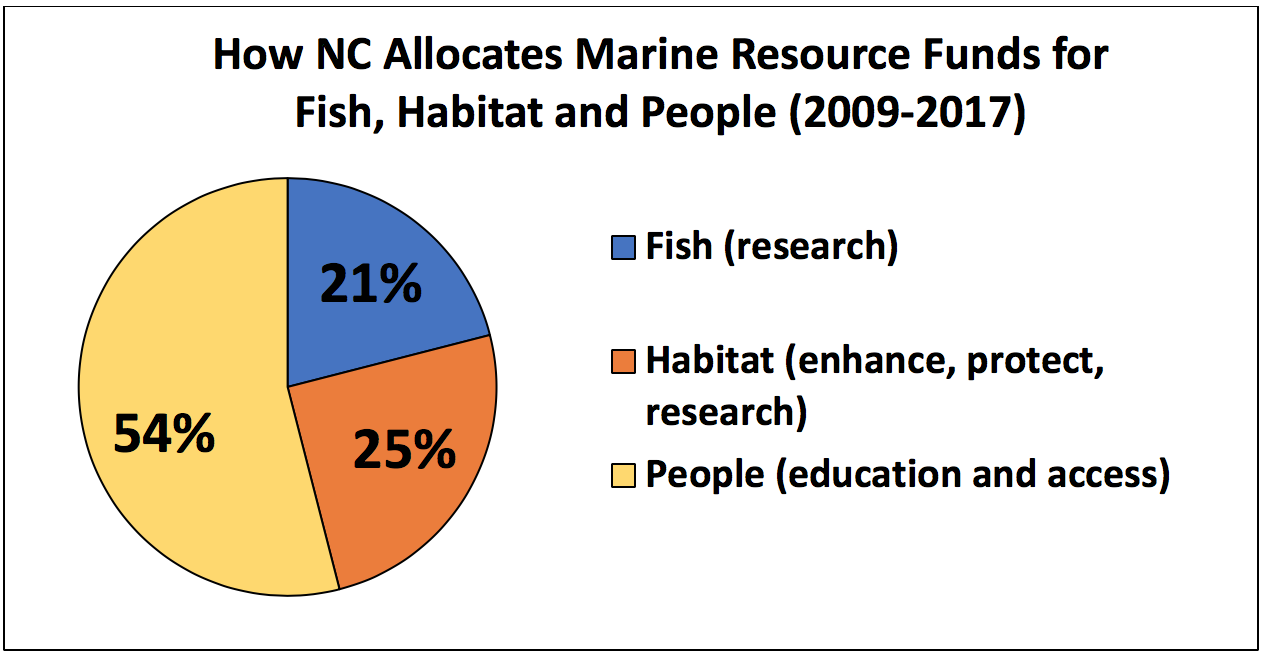What Do They Spend Your Fishing License Fee On?

Getting ready to buy a Coastal Recreational Fishing License? Here’s where the money goes.
It costs money to manage living marine resources, create and enhance fisheries habitat, and provide access and educational programs for the angling public. Officials rolled out the North Carolina Coastal Recreational Fishing License (CRFL) in 2007, in part, to assist in funding such tasks. The state requires that most saltwater anglers purchase a license in order to fish legally in the state. Visit the NCDMF website for specific information about CRFL requirements.
Once an angler purchases a CRFL, proceeds from the sale go into the Marine Resources Fund. (New lifetime licenses go into a separate fund.) The North Carolina General Assembly created the Marine Resources Fund to manage, protect, restore, develop, cultivate and enhance the marine resources of the state.
But what happens to the money after it reaches the fund? More than a few times anglers have asked, “Where does my license fee go — and what do they spend it on?”
Long story short: a portion of the fund supports the everyday activities of the North Carolina Division of Marine Fisheries (NCDMF), and a portion underwrites new or temporary expenditures that vary from year to year.
Since this is such a popular question, here’s a look at how the state has used the Marine Resource Fund for these new or temporary expenditures from 2009 to 2017.
Where can you find information on projects that the Marine Resources Fund supports ?
All of the information about the Marine Resources Fund and the CRFL is available on the NCDMF website. The grants that the program supports cover three focus areas.
- People: projects that include public education and public water access.
- Habitat: projects that enhance, protect, or research fisheries habitat.
- Fish: projects that conduct fisheries research.
Publicly available information includes news releases, which list titles of projects funded, sometimes with descriptions, for each year by category (fish, habitat, people) and recipient (e.g., town, university, agency, non-profit).
So, where did the money go?
From 2009 to 2017, the Marine Resources Fund supported “Fish, Habitat and People” through 146 grants amounting to $18,481,378. Recipients included NCDMF, the N.C. Wildlife Resources Commission, universities, cities and towns, and non-profits, among others.
Looking at the totals for each category, it’s clear that more funding has gone to “People” (54%) than Fish (21%) and Habitat (25%) combined.

The “People” category includes expensive waterfront access projects, such as new or improved boat ramps and the purchase of property for those accesses, as well as public education projects, which, on average, are much less expensive. In fact, the state allocated 37 of 59 of the projects and 92% of the funding under this category to enhancing public access.
Some people would argue that the most needed public water access projects have been completed, which, in turn, might suggest that more funding should be available for other categories of projects now and in the years to come. On the other hand, many people in southeastern North Carolina, the most crowded portion of the coast, likely will see a need for more access.

Also of note, the “Habitat” category of funding has fluctuated year to year, because it occasionally has included research projects and efforts to create inshore and offshore artificial reefs. The “Fish” category, however, has remained the lowest and the most consistent, because these projects only focused on fisheries research and monitoring.
You can access the final reports of all the projects that the Marine Resources Fund supports.
This article was originally posted on Oct. 14, 2019.
Summary compiled by Scott Baker
Lead photo: Snow’s Cut Boating Access, Carolina Beach, by Scott Baker
The text from Hook, Line & Science is available to reprint and republish, but only in its entirety and with this attribution: Hook, Line & Science, courtesy of Scott Baker and Sara Mirabilio, North Carolina Sea Grant. HookLineScience.com




